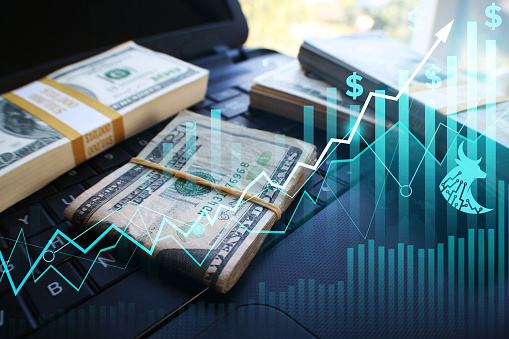Hello, everyone! Today, we’ll dive into a crucial topic for 2024: how high interest rates are impacting consumer loans and what this means for both borrowers and lenders. In this post, I’ll break down the situation with real numbers, explain how we got here, and help you understand why these changes matter. And don’t worry—I’ll keep everything simple and clear!
1. High Interest Rates and Their Impact
In 2024, we are witnessing some of the highest interest rates seen in decades. After a series of rate hikes by the Federal Reserve starting in 2022 to combat rising inflation, the U.S. federal funds rate now sits at 5.25%. This is a sharp increase from near-zero rates during the COVID-19 pandemic. But why does this matter so much for consumers?
Higher interest rates mean that borrowing becomes more expensive. Let’s take an example: imagine you took out a $10,000 personal loan in 2021 when the average interest rate was around 5%. Your monthly payment might have been $188 over 5 years. Fast forward to 2024—now, that same loan could carry an interest rate of 10%, bumping your monthly payment up to $212. That extra $24 per month may not seem like much, but over the life of the loan, that’s nearly $1,500 more in interest! For larger loans, like mortgages or auto loans, the impact is even greater.
This rise in costs has made it harder for many consumers to afford loans, pushing some to reconsider borrowing altogether. This trend is already visible in areas like mortgage loans and auto loans, where originations have declined due to the high cost of borrowing(

2. The Challenge of Affordability
Let’s talk about how these high rates are affecting everyday consumers. One of the key problems is the strain on affordability. Consumers who already have loans—especially variable-rate loans—are seeing their monthly payments rise. For instance, a homeowner with a variable-rate mortgage could see their rate adjust upward, increasing their payment by hundreds of dollars a month.
For those with credit card debt, the situation is even more pressing. Credit card interest rates have skyrocketed, with many now averaging around 20% or higher. Imagine having $5,000 in credit card debt with an interest rate of 18%. In 2021, you might have paid around $75 in monthly interest. In 2024, with the average rate closer to 22%, that same debt now costs $92 a month in interest—an extra $17 every single month just for carrying the same balance(
3. Lenders Adapting to Rising Rates
Now, let’s shift our focus to how lenders are responding to this environment. Interestingly, while demand for loans may be dropping in some areas due to higher rates, lenders are finding ways to make the most of the situation. Higher interest rates mean more profit for lenders on the loans they do approve, but it also forces them to tighten their lending criteria.
For example, banks and financial institutions are being more selective about who qualifies for loans. They are looking closely at credit scores, debt-to-income ratios, and employment stability. Essentially, they want to be sure that borrowers can handle the higher payments that come with today’s loans. This means consumers with lower credit scores or unstable income may find it harder to qualify for new loans(
CrossRiver)(
At the same time, lenders are speeding up their approval processes and working with fintech companies to streamline operations. Faster approvals can be a competitive advantage in this challenging market, helping banks win over the most qualified borrowers.
4. Where Are the Opportunities?
Despite the challenges, there are still opportunities in the consumer loan market. One area that is gaining momentum is green lending. This involves loans for environmentally friendly projects, such as energy-efficient home upgrades or electric vehicles. With more consumers becoming eco-conscious and governments offering incentives for sustainable choices, green loans are a growing sector. In fact, 52% of banks now see climate change as a significant factor influencing their loan strategies(
Additionally, certain types of loans, like debt consolidation loans, are still in demand. These loans allow consumers to combine higher-interest debts (like credit card balances) into a single loan with a lower rate. For example, instead of paying 20% on credit card debt, a consumer might take out a personal loan at 10%, saving them money in the long run.
Conclusion: How to Navigate the High-Rate Environment
To wrap things up, 2024 presents both challenges and opportunities in the world of consumer lending. High interest rates have made borrowing more expensive, and this trend is affecting both consumers and lenders in profound ways. Borrowers are feeling the pinch, especially those with variable-rate loans or high credit card debt. On the flip side, lenders are adjusting by tightening credit standards and offering faster approval processes, while also exploring new avenues like green lending.
If you’re a consumer in this environment, the key is to plan carefully. Focus on paying down high-interest debt and avoid taking on new loans unless absolutely necessary. If you do need to borrow, consider options like debt consolidation to reduce the overall cost of your debt. And, of course, if you’re thinking about financing an eco-friendly project, now might be a great time to explore green lending options.
Thank you for joining me today, and I hope this helps you better understand the current landscape of consumer loans in 2024!
